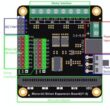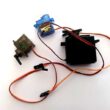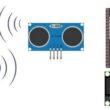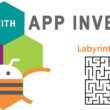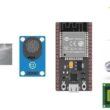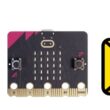Detection and tracking of a moving object using ESP32 and webcam
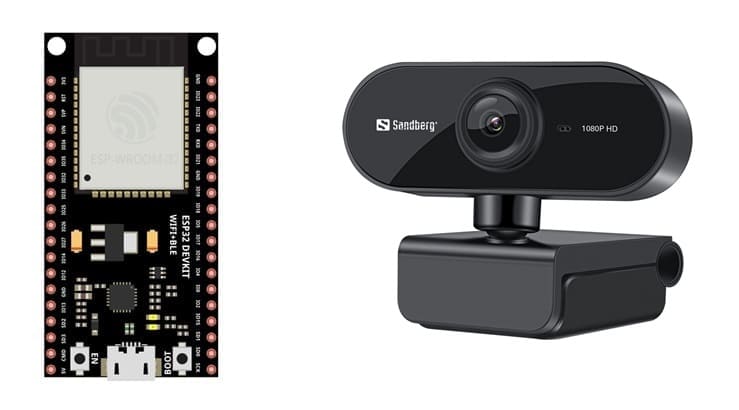
Detecting and tracking a moving object is a common problem in computer vision, often achieved through a combination of techniques depending on the environment, object properties, and tracking requirements. Here’s an overview of key methods and approaches to object detection and tracking.
1. Object Detection Methods
a. Background Subtraction:
Used primarily in stationary camera setups where background remains relatively constant.
Subtract the background from each frame, isolating moving foreground objects.
Techniques: Gaussian Mixture Models (GMM), frame differencing, and median filtering.
b. Optical Flow:
Estimates the motion of each pixel by analyzing consecutive frames.
Suitable for identifying the movement of objects even when they are similar in color to the background.
Methods: Farneback algorithm, Lucas-Kanade method, Horn-Schunck algorithm.
c. YOLO (You Only Look Once) and Other Deep Learning-Based Detectors:
Deep neural networks like YOLO, SSD, and Faster R-CNN can detect objects with high accuracy.
Perform well with pre-trained models for specific classes, or you can fine-tune them on custom objects.
Ideal for tracking specific types of objects (e.g., people, cars, animals).
d. Feature Matching:
Finds distinct feature points in an image (like edges, corners) and matches these across frames.
Algorithms: Scale-Invariant Feature Transform (SIFT), Speeded Up Robust Features (SURF), and ORB (Oriented FAST and Rotated BRIEF).
This method is effective for tracking objects that have distinct visual features.
2. Object Tracking Methods
a. Tracking with Kalman Filter:
A recursive algorithm that estimates the state of a moving object based on previous states and measurements.
Assumes linear motion, making it suitable for simple, steady movements.
Often combined with other methods, like bounding box detection, for object localization.
b. Mean Shift and CAMShift:
Mean Shift is a non-parametric algorithm that finds the most probable region where the object exists by maximizing a probability density.
CAMShift (Continuously Adaptive Mean Shift) is an extension that adapts the window size as the object size changes, making it useful for objects of varying scale.
Effective in environments with similar lighting and colors but not ideal for complex backgrounds.
c. Correlation Filters:
Train a correlation filter to recognize an object from an initial bounding box.
Filters are computationally efficient and widely used in real-time applications.
Examples: MOSSE (Minimum Output Sum of Squared Error), KCF (Kernelized Correlation Filters), and CSRT (Channel and Spatial Reliability Tracking).
d. Deep Learning-Based Trackers:
Trackers like Siamese networks are trained to compare regions in consecutive frames, making them highly effective for tracking unique objects.
Examples: SiamFC (Fully-Convolutional Siamese Networks), GOTURN (Generic Object Tracking Using Regression Networks).
Often require large training data and substantial computational power but yield high tracking accuracy.
e. Multi-Object Tracking (MOT):
Tracks multiple objects simultaneously, often using data association techniques like the Hungarian algorithm.
SORT (Simple Online and Realtime Tracking) and DeepSORT (SORT enhanced with appearance features) are popular choices for multi-object tracking.
3. Implementing Object Detection and Tracking
A practical approach to implement detection and tracking can combine these techniques based on the application:
Step 1: Use a deep learning model (e.g., YOLO or Faster R-CNN) for object detection.
Step 2: Initialize a tracker (e.g., Kalman filter, KCF) on the detected bounding box.
Step 3: Use the tracker to predict the object's position in the next frames, updating with detection data when available.
Step 4: Apply data association and filtering techniques (e.g., Hungarian algorithm for MOT) to manage multiple objects and reduce noise.



















